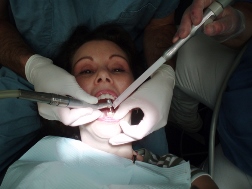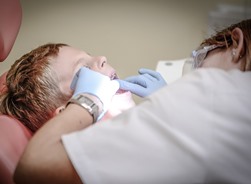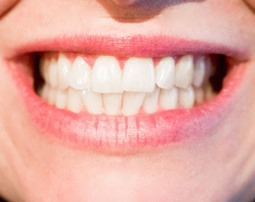How to Find the Right Dental Hygienist School near Post Texas
 Selecting the right dental hygienist school near Post TX is an essential initial step toward launching your new career in dentistry. But prior to making your choice, you need to evaluate and compare your school options. There is much more to doing your due diligence than selecting the school with the least expensive tuition or enrolling in the college that is closest to your home. There are other crucial factors to take into account as well, such as the school’s reputation and accreditation. Dental hygienists typically earn an Associate Degree, as compared to a certificate usually earned by assistants, and can take anywhere from 2 to 3 years to finish. Obviously with the lengthier training of a hygienist comes more expense. We will discuss all of these concerns and additional questions that you should be asking the dental hygienist programs you are looking at later in this article. But first, let’s explore the roles of dental hygienists and the training programs available.
Selecting the right dental hygienist school near Post TX is an essential initial step toward launching your new career in dentistry. But prior to making your choice, you need to evaluate and compare your school options. There is much more to doing your due diligence than selecting the school with the least expensive tuition or enrolling in the college that is closest to your home. There are other crucial factors to take into account as well, such as the school’s reputation and accreditation. Dental hygienists typically earn an Associate Degree, as compared to a certificate usually earned by assistants, and can take anywhere from 2 to 3 years to finish. Obviously with the lengthier training of a hygienist comes more expense. We will discuss all of these concerns and additional questions that you should be asking the dental hygienist programs you are looking at later in this article. But first, let’s explore the roles of dental hygienists and the training programs available.
The Duties of a Dental Hygienist
 When comparing the job of a dental assistant to that of a hygienist, the most significant difference is undoubtedly that the hygienist works more independently. Dental assistants work with and in support of the Post TX dentists and the practice. Hygienists, while also assisting the practice, deal with the patients more on an individual basis. They are often the first person a patient sees when called from the waiting area. They examine every patient’s teeth and gums and report their results to the dentists. They may also perform basic procedures. Based on state law, a hygienist’s duties can include:
When comparing the job of a dental assistant to that of a hygienist, the most significant difference is undoubtedly that the hygienist works more independently. Dental assistants work with and in support of the Post TX dentists and the practice. Hygienists, while also assisting the practice, deal with the patients more on an individual basis. They are often the first person a patient sees when called from the waiting area. They examine every patient’s teeth and gums and report their results to the dentists. They may also perform basic procedures. Based on state law, a hygienist’s duties can include:
- Removing tartar, stains and plaque
- Applying fluoride treatments
- Applying sealants and polishing teeth
- Teaching patients regarding oral care
- Taking and developing X-rays
- Applying fillings and removing sutures
In order to be licensed in nearly all states, dental hygienists must graduate from a Commission on Dental Accreditation (CDA) accredited dental hygiene program. They also must pass the National Board Dental Hygiene Examination as well as any state licensure examinations. When they have completed these requirements they are deemed fully licensed and can add the “RDH” designation to their names, standing for Registered Dental Hygienist.
Dental Hygienist Education Options
Due to the additional responsibility as compared to an assistant, dental hygienists employed in Post TX dental offices are usually required to hold an Associate Degree in dental hygiene rather than a certificate. These programs can require anywhere from two to as long as three years to complete and must be accredited by the CDA in nearly every state. They are offered in trade and technical schools as well as community colleges. And in addition to classroom studies learning the fundamentals of dental hygiene, there will be a practical component to the training as well| Many programs also sponsor internships with local dentists or dental practices.
Dental Hygienist Online Schools
 Enrolling in an online dental hygienist college may be a great option for getting your training. Just keep in mind that the program will not be totally online, since there will be a practical component to your training. But the remainder of your classes will be available by means of your desktop computer in the convenience of your Post TX home or anywhere else on your tablet or laptop. For those continuing to work while going to college, online dental classes make education much more accessible. Many may even offer lower tuition rates than their traditional counterparts. And added expenses such as for commuting, books and school supplies may be reduced as well. The clinical training can typically be completed at an area dental practice or in an on-campus lab. With both the online and clinical training, everything required to receive the appropriate education is provided. If you have the dedication for this mode of learning, you may find that attending an online dental hygienist program is the ideal choice for you.
Enrolling in an online dental hygienist college may be a great option for getting your training. Just keep in mind that the program will not be totally online, since there will be a practical component to your training. But the remainder of your classes will be available by means of your desktop computer in the convenience of your Post TX home or anywhere else on your tablet or laptop. For those continuing to work while going to college, online dental classes make education much more accessible. Many may even offer lower tuition rates than their traditional counterparts. And added expenses such as for commuting, books and school supplies may be reduced as well. The clinical training can typically be completed at an area dental practice or in an on-campus lab. With both the online and clinical training, everything required to receive the appropriate education is provided. If you have the dedication for this mode of learning, you may find that attending an online dental hygienist program is the ideal choice for you.
Issues to Cover With Dental Hygienist Colleges
 Now that you have decided to become a dental hygienist in Post TX, you can start the process of comparing schools and programs. As we covered at the opening of this article, a number of prospective students begin by looking at the cost and the location of the schools. Perhaps they look for several online options also. Although these may be important initial considerations, there are several additional questions that you need to address to the programs you are comparing in order to arrive at an informed decision. To start that process, we have provided a list of questions to assist you with your evaluation and final selection of the right dental hygienist program for you.
Now that you have decided to become a dental hygienist in Post TX, you can start the process of comparing schools and programs. As we covered at the opening of this article, a number of prospective students begin by looking at the cost and the location of the schools. Perhaps they look for several online options also. Although these may be important initial considerations, there are several additional questions that you need to address to the programs you are comparing in order to arrive at an informed decision. To start that process, we have provided a list of questions to assist you with your evaluation and final selection of the right dental hygienist program for you.
Is the Dental Program Accredited? There are several valid reasons why you should only choose an accredited dental hygienist college. If you are intending to become certified or licensed, then accreditation is a condition in virtually all states. To qualify to take the National Board Dental Hygiene Exam, your dental program must be accredited by the Commission on Dental Accreditation (CDA). Accreditation also helps establish that the education you get is comprehensive and of the highest quality. Post TX employers typically desire or require that new hires are graduates of accredited programs. And last, if you are requesting financial aid or a student loan, often they are not available for non-accredited colleges.
Is Sufficient Clinical Training Included? Practical or clinical training is an essential part of every dental training program. This applies for the online college options as well. Many dental hygienist programs have relationships with area dental practices and clinics that provide clinical training for their students. It’s not only important that the college you enroll in provides adequate clinical hours but also provides them in the kind of practice that you subsequently want to work in. As an example, if you are interested in a career in pediatric dentistry, check that the school you select offers clinical rotation in a local Post TX dental practice that specializes in dental care for children.
Is There an Internship Program? Find out if the dental schools you are considering sponsor internship programs. Internships are probably the best way to get hands-on, clinical experience in a real dental practice. They make it easier for students to transition from the theoretical to the practical. They can also help students build professional relationships in the Post TX dentistry community. And they look good on resumes too.
Is Job Placement Assistance Provided? Many students that have graduated from dental hygienist programs require assistance landing their first job. Check if the programs you are looking at have job assistance programs, and what their job placement rates are. Programs with high job placement rates are likely to have good reputations within the Post TX dental profession in addition to large networks of contacts where they can refer their students for employment or internships.
Are Classes Small? Find out from the programs you are interested in how large typically their classes are. The smaller classes usually offer a more intimate atmosphere for training where students have increased access to the teachers. Conversely, larger classes often are impersonal and offer little one-on-one instruction. If practical, find out if you can attend a few classes at the Post TX dental hygienist college that you are most interested in in order to witness first hand the degree of interaction between students and instructors before enrolling.
What is the Total Expense of the Program? Dental hygiene programs can fluctuate in cost dependent on the length of the program and the amount of clinical training provided. Other variables, for instance the reputations of the schools and whether they are private or public also come into play. But besides the tuition there are other substantial costs which can add up. They can include expenses for such things as textbooks and commuting as well as school equipment, materials and supplies. So when analyzing the cost of colleges, remember to add all of the expenses associated with your education. Most colleges have financial aid offices, so make sure to ask what is available as far as grants, loans and scholarships in the Post TX area.
Are the Classes Accessible? Before enrolling in a dental hygienist school, you must confirm that the hygienist or assistant program furnishes classes that accommodate your schedule. This is particularly true if you will be working while acquiring your education and need to attend classes near Post TX at nights or on weekends. And even if you enroll in an online school, you will still need to schedule your practical training classes. Also, while making your inquiries, ask what the make-up policy is if you should have to miss any classes due to work, illness or family issues.
Attending Dental Hygienist School near Post TX?
Post, Texas
The land belonged to John Bunyan Slaughter, as it was on his U Lazy S Ranch.[4] In 1906, Slaughter sold it to Charles William (C. W.) Post, the breakfast cereal manufacturer, who founded "Post City" as a utopian colonizing venture in 1907. Post devised the community as a model town.[5][6] He purchased 200,000 acres (810 km2) of ranchland and established the Double U Company to manage the town's construction. The company built trim houses and numerous structures, which included the Algerita Hotel, a gin, and a textile plant. They planted trees along every street and prohibited alcoholic beverages and brothels. The Double U Company rented and sold farms and houses to settlers. A post office began in a tent during the year of Post City's founding, being established (with the name Post) July 18, 1907, with Frank L. Curtis as first postmaster.[7] Two years later, the town had a school, a bank, and a newspaper, the Post City Post, the same name as the daily in St. Louis, Missouri. The Garza County paper today is called the Post Dispatch. The railroad reached the town in 1910. The town changed its name to "Post" when it incorporated in 1914, the year of C. W. Post's death. By then, Post had a population of 1000, 10 retail businesses, a dentist, a physician, a sanitarium, and Baptist, Methodist, and Presbyterian churches.
Postex Cotton Mills began production in 1913 with 250 employees. When the Post interests sold the business in 1945 to Ely and Walker Dry Goods Company of St. Louis, the plant was producing six million yards of cloth a year and employed 375 workers who manufactured Postex cotton sheets and Garza pillow cases. Ely and Walker sold Postex in 1955 to Burlington Industries, the world's largest textile manufacturer at that time. By 1973, the company employed 450 persons. The mill has since closed.
Oilfield service companies have been important to the economy, as have farming and ranching. In 1989, Post had two libraries, a hospital, a nursing home, an airport, the Post Dispatch (founded 1926), and 90 businesses. The population reached 3,400 in 1928, declined to 2,000 in 1940, and increased to 3,100 during the 1950s. With the development of the local oil industry, the town's population attained its highest level of 4,800 in 1964. The 1980 census showed a population of 3,864, but by 1988, the Texas Almanac reported 4,162. In 1990, the population was 3,768.
Many ranchers and civic boosters live in Garza County, among them Giles McCrary, a former mayor who until his death in 2011 operated the OS Museum, a hybrid of exhibits from both the American West and Asia, which are changed three times per year. Two baseball fields in Post are named for former resident Norm Cash.
Choose the Ideal Dental Hygienist School near Post TX
Selecting the ideal dental hygienist program is essential if you want to take the National Board Dental Hygiene exam or, if required in your state, become licensed. As we have covered, there are a number of options available to acquire your training and it takes a relatively short amount of time to become a dental hygienist. You can obtain your formal education through dental programs at junior colleges, trade schools, vocational schools and technical institutes. Graduates of these schools generally receive an Associate Degree. Dental Hygienists typically require about two years of studies before they enter the job market. When pursuing a degree you can choose to go to classes on-campus or online. Whichever mode of training you decide to pursue, by addressing the questions provided in this article you will be in a better position to make the right choice. And as a result, you will be ready to start your journey toward becoming a dental hygienist in Post TX.
More Great Cities in Texas
